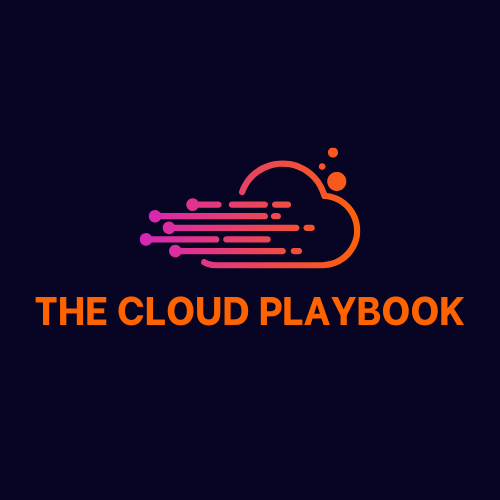TCP#25: What is Policy as Code?
The what, why and how to get started implementing this DevSecOps practice.
You can also read my newsletters from the Substack mobile app and be notified when a new issue is available.
DevSecOps is a DevOps practice that integrates security into every phase of the development lifecycle.
One of the most effective ways to automate and enforce security in DevSecOps is through Policy as Code (PaC).
Codifying security policies and automating enforcement reduces human error, minimizes security gaps, and ensures compliance.
AWS provides various services that make implementing Policy as Code easier and more efficient.
In today’s newsletter, I will discuss what Policy as Code (PaC) means, why it is important, and how to implement it as part of adopting the DevSecOps practice.

What is Policy as Code?
Policy as Code (PaC) writes security and compliance policies in machine-readable formats.
This allows teams to automate the enforcement of policies throughout the CI/CD pipeline.
Instead of manually checking for compliance and vulnerabilities, PaC automates these processes, ensuring security is built in from the start.
For example, with PaC, you can automatically enforce encryption on all S3 buckets or ensure that IAM roles never have full administrative privileges without oversight. This creates a scalable way to enforce security across large, dynamic environments like AWS.
Why Policy as Code Matters
Traditional security policies often involve static documents gathering dust in a folder.
PaC flips the script.
It turns those policies into executable code, making them an integral part of your development pipeline.
This approach brings several useful benefits:
Consistency: No more manual policy enforcement prone to human error.
Scalability: Policies automatically apply across your entire AWS infrastructure.
Auditability: Every policy change is tracked in version control.
Faster deployments: Security checks become part of your automated CI/CD process.
How To Get Started?
Step 1: Setting Up AWS Config for Continuous Compliance
AWS Config is a service that monitors and evaluates your AWS resource configurations. It continuously tracks configuration changes and checks them against predefined policies, making it ideal for enforcing Policy as Code.
Step 1: Define Compliance Rules
To start, create rules in AWS Config that reflect your security policies. For example, set a rule that requires all EC2 instances to have encrypted volumes. You can use AWS’s managed rules or write custom ones using AWS Lambda.
Step 2: Automate Audits
Once your rules are set up, AWS Config continuously audits your environment.
It flags any non-compliant resources and provides a detailed report on what needs to be fixed. You can then automate remediation using Lambda functions to bring resources back into compliance automatically.
Step 2: Enforcing Security Policies with AWS IAM Access Analyzer
IAM roles and permissions are critical for enforcing Policy as Code.
AWS IAM Access Analyzer helps you identify resources shared publicly or with external accounts, ensuring that your security policies are enforced properly.
Step 1: Define Access Policies
Write your IAM policies as code. For instance, ensure that no role has broad administrative privileges unless explicitly needed. Use the principle of least privilege to restrict roles to only the permissions they need.
Step 2: Use IAM Access Analyzer
Once your IAM policies are defined, use IAM Access Analyzer to continuously monitor permissions and ensure that no resources are exposed inappropriately.
This tool flags any public or cross-account access and gives real-time alerts to address security issues.
Step 3: Automating Security Checks in CI/CD Pipelines
Integrating Policy as Code into your CI/CD pipeline ensures no insecure code or misconfigured resources are deployed into production.
This step is crucial for embedding security throughout the development lifecycle.
Step 1: Use AWS CodePipeline and CodeBuild
Integrate AWS CodePipeline and CodeBuild into your CI/CD workflow. Set up automated security checks at each stage of the pipeline.
For example, before pushing code to production, run tests to ensure compliance with security policies, such as validating that all S3 buckets in the deployment are encrypted.
Step 2: Automate Testing with AWS Security Hub
Use AWS Security Hub to automatically gather and analyze security findings across your AWS environment.
Security Hub aggregates data from services like GuardDuty and Inspector, providing a comprehensive view of your security posture.
By integrating Security Hub into your CI/CD pipeline, you can automatically block deployments if any security policies are violated.
Step 4: Using AWS CloudFormation for Policy-Driven Infrastructure
Infrastructure as Code (IaC) is a powerful way to ensure your resources are deployed consistently and securely.
AWS CloudFormation or CDK allows you to define and deploy infrastructure based on predefined templates, including security policies, as code.
Step 1: Create CloudFormation Templates with Embedded Policies
Define your infrastructure using CloudFormation templates and embed security policies directly into the templates.
For example, ensure that any EC2 instances created through CloudFormation have encrypted EBS volumes and are launched within a VPC with specific security groups.
Step 2: Enforce Policies During Deployment
Before deploying infrastructure, CloudFormation can check the templates against AWS Config rules to ensure compliance.
If non-compliant resources are detected, the deployment can be halted automatically, preventing insecure infrastructure from being launched.
Step 5: Monitoring Compliance with AWS Security Services
Monitoring is crucial to ensure policies are continually enforced and security remains intact as environments evolve.
AWS provides monitoring tools to help you stay on top of compliance.
Step 1: Use AWS Trusted Advisor
AWS Trusted Advisor provides real-time best practice recommendations across five categories: cost optimization, security, fault tolerance, performance, and service limits.
Enable security checks in Trusted Advisor to automatically monitor your environment for compliance with your PaC policies.
Step 2: Set Up AWS GuardDuty
AWS GuardDuty is a threat detection service that monitors for malicious or unauthorized activity.
By integrating GuardDuty with your Policy as Code framework, you can automatically respond to incidents, such as shutting down compromised EC2 instances or revoking suspicious access.
Step 6: Continuous Improvement with Post-Implementation Reviews
Once you’ve implemented Policy as Code, the work doesn’t stop there. Continuous improvement is key to avoiding new vulnerabilities and evolving security threats.
Step 1: Regular Audits and Adjustments
To ensure the effectiveness of your policies, set up regular security audits using AWS services like Config and Security Hub.
If a new AWS service is added to your architecture, update your PaC rules to account for it.
Step 2: Automate Policy Updates
As security requirements change, automate updating and applying new policies. This ensures that your organization can rapidly respond to new threats without manually adjusting each system.
Final Thoughts
Implementing Policy as Code as part of your DevSecOps practice on AWS is not just about enforcing security—it’s about automating security, making it scalable, and ensuring that your entire environment is consistently protected.
Start by setting up small, manageable policies and expand as you gain confidence in your processes.
With Policy as Code, you’re boosting security and streamlining operations, allowing developers and security teams to focus on what matters most.
Don't forget to follow me on X/Twitter and LinkedIn for daily insights.
That’s it for today!
Did you enjoy this newsletter issue?
Share with your friends, colleagues, and your favorite social media platform.
Until next week — Amrut
Posts that caught my eye this week
Whenever you’re ready, there are 2 ways I can help you:
Are you thinking about getting certified as a Google Cloud Digital Leader?
Here’s a link to my Udemy course, which has helped 617+ students prepare and pass the exam. Currently, rated 4.24/5. (link)
Course Recommendation: AWS Courses by Adrian Cantrill (Certified + Job Ready):
ALL THE THINGS Bundle (I got this and highly recommend it!)
Get in touch
You can find me on LinkedIn or X.
If you wish to request a topic you would like to read, you can contact me directly via LinkedIn or X.







